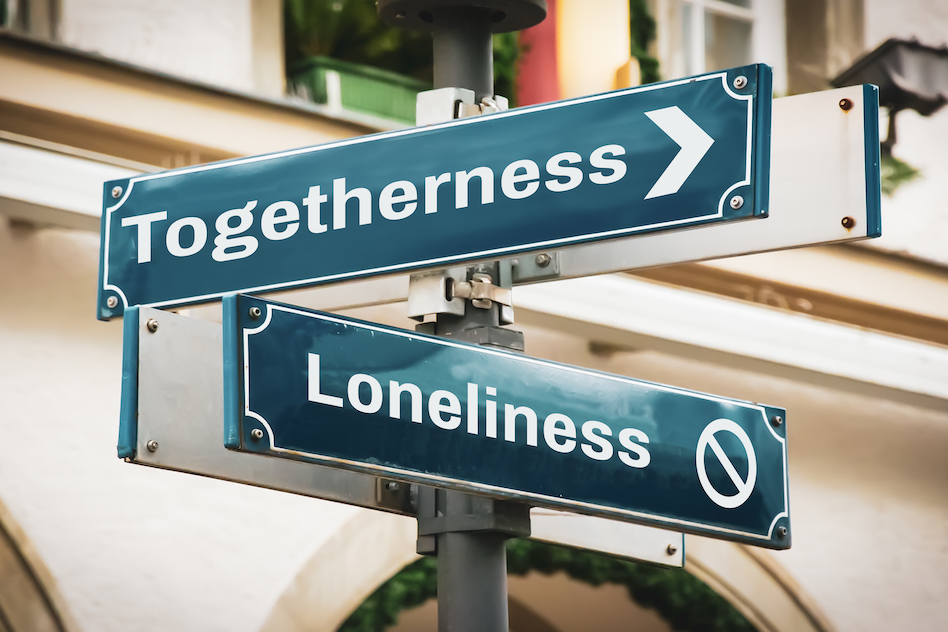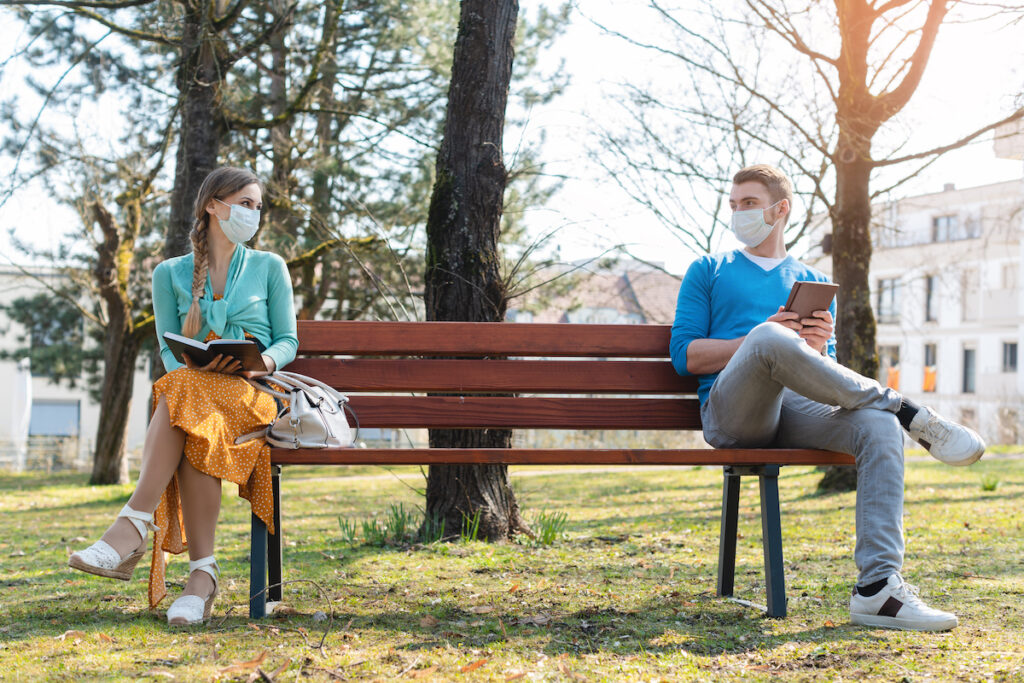
The current COVID-19 pandemic has undeniably changed life as we know it. For millions of people around the globe face-to-face interactions and social activities have become obsolete, working remotely has become the new norm and people remain within their area code unable to travel. This radical departure from their past patterns of daily life may cause habitual coping mechanisms, such as meeting with others to be disrupted, leading to a heightened risk of feeling that the emotional and social support available to them is insufficient to meet their needs. As a result, there are concerns of a rise in people’s sense of loneliness.
Loneliness has been recognised as a major public health concern (Leigh-Hunt, et al. 2017) associated with a heightened risk of mental and physical illness, cognitive decline, suicidal behaviour and all-cause mortality (Leigh-Hunt, et al. 2017). The severity of its aftermath has often led to loneliness itself being referred to as an epidemic (Jeste, et al. 2020). Previous research has highlighted that groups at risk of loneliness include women, both younger and older people (Victor & Yang, 2012), being a migrant (Salway, et al. 2020), people from low socio-economic status, as well those with poor mental and physical health (Pinquart & Sörensen, 2003).
Government enforced lockdowns taking place worldwide could potentially open the Pandora’s box for those already at risk and affect groups of people who have not experienced loneliness before (Fancourt & Steptoe, 2020). ‘Stay-at-home’ orders mandate physical and social distancing, which lay the ground for people to experience social isolation. Despite social isolation conceptually differing from loneliness, the two terms are intertwined, with isolation often being a contributing factor for becoming lonely.
But one thing remains unclear: who is lonely in lockdown? This unanswered question is what Bu et al (2020) strived to answer and compare to what we currently know about loneliness and social isolation.

If we were already experience a loneliness epidemic before COVID-19, this new coronavirus pandemic has the potential to make things a whole lot worse.
Methods
For the purpose of this study the researchers conducted a cross-cohort analysis of predictors of loneliness before and during the COVID-19 pandemic. Data was drawn from two pools of participants. The pre-pandemic pool revolved around the Understanding Society: the UK Household Longitudinal Study (UKHLS), a nationally representative household study of the UK population. A sample size of 31,064 participants was gathered from this population for whom a measure of loneliness was introduced. The post-pandemic pool was composed of the UCL COVID-19 Social Study; a large study of the psychological and social experiences during the pandemic. The data were collected initially via “snowballing”, followed by a more targeted recruitment in order to take into account income, education level and employment status. Finally, the study was promoted via partnerships with third sector organisations to vulnerable groups, including adults with pre-existing mental illness, older adults and carers. All the above provided a final sample size of 60,341 participants.
In both data sets, loneliness was measured using the three-item UCLA loneliness scale (UCLA- 3). The questions were as follows:
- How often do you feel a lack of companionship?
- How often do you feel isolated from others?
- How often do you feel left out?
Responses to each question were scored on a three-point Likert scale ranging from hardly ever/never, to some of the time and often. Using the total score, provided a loneliness scale ranging from 3 to 9, with a higher score indicating higher levels of loneliness. Covariates included age groups, gender, ethnicity, level of education, low income, employment status, whether they were living alone and the area in which they lived.
Results
- The data suggested that reports of loneliness were higher in the UCL COVID-19 Social Study. People reported feeling sometimes lonely at a rate of 32.5% and often lonely at 18.3% during the pandemic. In comparison, the UKHLS data set suggested people feeling sometimes lonely at a degree of 28.6% and often lonely at 8.5% for the pre-pandemic pool.
- The contributing risk factors for loneliness were found to be unchanged during the pandemic:
- Adults aged from 18 to 30 years were more likely to be lonely compared to adults aged 60 and older
- Furthermore, the same applied to people living alone, having a low household income and being unemployed
- Being a student was only a moderate risk factor before the pandemic, but was a greater risk factor during the pandemic
- Other known risk factors including non-white ethnicity, being a woman, having low educational attainment and living in urban areas were only small risk factors, but were maintained before and during the pandemic.

According to this research, loneliness is linked to: living alone or in a city, having low income, being unemployed, a student, a woman, having non-white ethnicity or low educational attainment.
Conclusions
The authors concluded that interventions to reduce or prevent loneliness during COVID-19 should be targeted at those sociodemographic groups already identified as high risk in previous research. These groups are likely not just to experience loneliness during the pandemic, but potentially to experiencing loneliness at a higher level relative to low-risk groups.

Lonely people who needed help before the pandemic, really need help now.
Strengths and limitations
This study has numerous strengths. Firstly, it has an established concurrent validity as it uses the UCLA-3 questionnaire that has been grounded in much research and is widely used. Furthermore, the cross-cohort comparisons of two large samples with harmonised measures before and during the pandemic allows for a comprehensive and inclusive sample to be composed. Additionally, having considered the risk factors previously founded in research, it controlled for potential covariates.
On the other hand, one weakness revolves around the population being non-random. As the researchers engaged in a targeted participant search there is a possibility that the study attracted individuals who were feeling more lonely to participate, functioning as a self-fulfilling prophecy. To add on, due to having two distinguishable pools of participants it can be unclear individuals were experiencing loneliness before the COVID-19 lockdowns. Moreover, some of the categories the researchers dove into were a bit vague. An example of this is not considering for migration, as it engulfs many smaller factors within it. These can be being unable to fly, meet up with family and homesickness. Similarly the same can apply for the gender variable in order to include those who identify beyond the binary system. Hence, researcher bias and generalisability issues ought to be kept in mind.

It’s important that future research looks in more detail at how ethnicity and gender are linked to loneliness.
Implications for practice
All in all, this study investigated who was most at risk of experiencing loneliness during the UK lockdown due to the COVID-19 pandemic. This focus sheds some light on a topic that is in the spotlight of the current zeitgeist expanding our understanding of the side-effects of a pandemic. The results add to previous literature regarding the contributing factors of loneliness, by illustrating that young adults, people living alone, people with lower education or income, the economically inactive, women, ethnic minority groups and urban residents had a higher risk of being lonely both before and during the pandemic. Students emerged as a new group with a higher chance of being lonely, something that may be attributed to studying alone abroad, being unable to physically attend classes or social events and being restricted to staying in student accommodation. As these already vulnerable populations may see their state of loneliness persisting, there is the potential for their mental health to exacerbate leading to non-adherence to government lockdown regulations. Thus, the findings suggest that in order to reduce or even prevent loneliness during these challenging times efforts and policy changes ought to target these sociodemographic groups by making this endeavour a public health priority.
Whilst the COVID-19 pandemic is still ongoing leaving many of us troubled and still struggling to adapt to a new socially isolated way of life, some potential avenues that can be explored are the long-term effects on our sense of being. As humans can be characterised as social animals (Aronson, 2012) it would be interesting to investigate in a longitudinal way its long-lasting effects in our habits and way of life. Future studies can also look into to whether the interaction between different risk categories affected loneliness levels during the pandemic and explore the potential buffering role of protective social or behavioural factors.

Are people who experience poorer mental health as a result of being lonely, less likely to adhere to government lockdown regulations?
Conflicts of interest
None.
Links
Primary paper
Bu, F., Steptoe, A., & Fancourt, D. (2020). Who is lonely in lockdown? Cross-cohort analyses of predictors of loneliness before and during the COVID-19 pandemic. Public health, 186, 31–34.
Other references
Aronson, E. (2012). The social animal. New York: W.H. Freeman.
Fancourt D.,& Steptoe A. (2020). Is this social isolation? Do we need to think broadly about the impact of social experiences during covid-19.
Jeste, D. V., Lee, E. E., & Cacioppo, S. (2020). Battling the Modern Behavioral Epidemic of Loneliness: Suggestions for Research and Interventions. JAMA psychiatry, 77(6), 553–554.
Leigh-Hunt N, Bagguley D, Bash K, et al. (2017). An overview of systematic reviews on the public health consequences of social isolation and loneliness. Public Health. 152. 10.1016/j.puhe.2017.07.035. 3.
Pinquart, M., & Sörensen, S. (2003). Risk factors for loneliness in adulthood and old age–a meta-analysis. Nova Science Publishers. p. 111e43.
Victor, C. R., & Yang, K. (2012). The prevalence of loneliness among adults: a case study of the United Kingdom. The Journal of psychology, 146(1-2), 85–104.
Photo credits
- Photo by Ben Collins on Unsplash
- Photo by Samuel Austin on Unsplash
